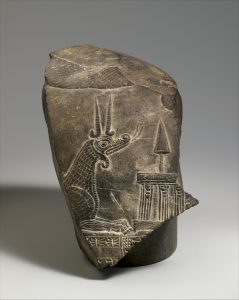POEMS IN POSTHUMAN AKKADIAN
Episode 19-2
Watch KUDURRU – Part One h e r e
Watch KUDURRU – Part Three h e r e
Livestream from Todessa
Camera: Tman
Cast: Totleb & Co.
Editor: Todito
Soundmix: Todonsky Junior
Directed by: T.L.
POEMS IN POSTHUMAN AKKADIAN
written by General Totleben
© Ivan Stanev, executor testamentarius
Read the full text of the poem KUDURRU – Part Two h e r e
Topics
Kudurru, Mushhushshu, Kali
Kali
Kali, (Sanskrit: “She Who Is Black” or “She Who Is Death”) in Hinduism, goddess of time, doomsday, and death, or the black goddess (the feminine form of Sanskrit kala, “time-doomsday- death” or “black”). Kali’s origins can be traced to the deities of the village, tribal, and mountain cultures of South Asia who were gradually appropriated and transformed, if never quite tamed, by the Sanskritic traditions. She makes her first major appearance in Sanskrit culture in the Devi Mahatmya (“The Glorifications of the Goddess,” c. 6th century CE). Kali’s iconography, cult, and mythology commonly associate her not only with death but also with sexuality, violence, and, paradoxically, in some later traditions, with motherly love.
Although depicted in many forms throughout South Asia (and now much of the world), Kali is most often characterized as black or blue, partially or completely naked, with a long lolling tongue, multiple arms, a skirt or girdle of human arms, a necklace of decapitated heads, and a decapitated head in one of her hands. She is often portrayed standing or dancing on her husband, the god Shiva, who lies prostrate beneath her. Many of those portrayals depict her sticking out her tongue, which is sometimes said to indicate her surprise and embarrassment at discovering that she is trampling on her husband. Yet the association of Kali with an extended tongue has early roots. A precursor of Kali is the ogress Long Tongue, who licks up oblations in the ancient Sanskrit texts known as the Brahmanas. The Devi Mahatmya tells of Kali springing from the anger of the goddess Durga to slay the demon Raktabija (“Blood-Seed”). During the struggle a new demon emerges from each drop of Raktabija’s blood as it hits the ground; to prevent this, Kali laps up the blood before it can reach the ground. She is also said to have been born when the goddess Parvati shed her dark skin; the sheath became Kali— who is also called Kaushika, “The Sheath”—leaving Parvati in the form of Gauri (“The Fair One”).
Worshipped throughout India but particularly in Kashmir, Kerala, South India, Bengal, and Assam, Kali is both geographically and culturally marginal.
Kudurru & Mushhushshuu
A. Called a mushhushshu, or “furious snake,” this fearsome dragon combines the head and scales of a horned viper, the forepaws of a lion, the talons of a bird of prey, and a tail ending in a scorpion’s stinger.

B. Top fragment of a kudurru with a mushhushshu dragon and divine symbols (1156–1025 BCE)
Known as kudurrus or narus, a distinctive group of Babylonian stone monuments were once thought to be boundary markers placed in fields. In fact they are more likely to have been placed in temples, where their contents were preserved and sanctified. The monuments, often made from polished black limestone, are usually uneven and boulder-like in shape. They carry inscriptions describing grants of land, often from the king to a high official. Around the text are placed divine symbols, which act to protect and guarantee the gift.
Kudurrus first appear in the second millennium B.C., during the period of Kassite rule in Babylonia. This fragmentary example dates to the 12th century B.C. The surviving piece, which comes from the top part of the kudurru, shows part of the body of a snake coiling round the upper surface. Below the snake is a mushhushshu, a composite dragon associated with Babylon’s chief deity, Marduk, and his son Nabu. The mushhushshu faces a temple façade or altar on which stands a spade symbol, also associated with Marduk. Below these can be seen a very small section of the original inscription. The other side of the stone shows astral symbols representing the sun (the sun-god Shamash) and Venus (the goddess Ishtar), as well as another stylized temple-façade, this time with a horned crown (a symbol used for the sky-god Anu and the great wind god Enlil). Also visible is part of a goat-fish, associated with the god Ea.
Languages / scripts used: English, French, German, Russian, Ancient Greek, Latin, Spanish, Sumerian/Akkadian, Proto-Elamite
Acknowledgements
Wagner, Furtwängler, Xhosa Women’s Songs, Prof. Thiagarajan & Sanskrit Scholars – Kali Gayathri Mantra, Pennsylvania Sumerian Dictionary Project, CDLI, Library of Congress, Britannica, The Met
LINKS
Chez Totleben | GOT | To Desca | Moon Lake | Papyri | Place Fantôme | La Tête | Weil |Toto | Ivan Stanev

